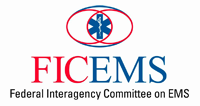Federal Officials Discuss EMS Issues, Including Disaster Response, Opioids
Members of the Federal Interagency Committee on EMS gathered to discuss topics ranging from a regional approach for disaster response to the opioid crisis
Leaders from federal agencies with a role in shaping U.S. EMS systems gathered earlier this summer for a meeting of the Federal Interagency Committee on EMS (FICEMS). At the meeting, officials stressed the importance of collaboration with EMS professionals at all levels.
“Be our eyes and ears out there,” encouraged FICEMS Chair Ed Gabriel, deputy assistant secretary for preparedness and response at the U.S. Department of Health and Human Services (HHS).
Representatives of several agencies updated the group on just some of the many current projects related to EMS happening at the federal level.
Regional Approach to Disaster Response
While not a completely new concept, the regional disaster health response system (RDHRS) expands on previous efforts to integrate different aspects of the healthcare continuum and expand partnerships in order to be prepared for disasters of any size.
Kevin Yeskey, MD, principal deputy assistant secretary for preparedness and response at HHS, provided details on the vision for the RDHRS.
“We’re trying to promote a multi-state regional system that is tiered [in which] patients work through the echelons of care,” he explained.
Dr. Yeskey outlined the overarching tenets of the vision, which include regionalization, responsiveness, situational awareness, readiness, and funding.
The RDHRS would build off of, rather than replace, existing efforts such as the Hospital Preparedness Program—coalitions would remain central to the system, but they would expand to more often include entities other than hospitals.
The Opioid Crisis
NHTSA Office of EMS staff member Jeremy Kinsman highlighted the ongoing use of EMS data to help combat the opioid overdose crisis. EMS data are critical to understanding the scope of opioid overdoses as well as treatment with opioid antagonists. NHTSA, the team at the National EMS Information System (NEMSIS) Technical Assistance Center and researchers at the U.S. Centers for Disease Control and Prevention (CDC) are working closely together to use the information collected by EMS clinicians every day to provide a more complete picture of the crisis.
In addition, opportunities to use existing funding mechanisms to support more data exchange were recently highlighted by the acting director of the Center for Medicaid and CHIP Services, Tim Hill.
In a letter sent to state Medicaid directors in June, Hill stated that the HITECH Act and Medicaid Information Technology Architecture (MITA) business practices can be used to fund integrated information systems, including enhanced connections between prescription drug monitoring programs (PDMPs) and health information exchanges (HIEs).
"States may consider integrating PDMPs into HIEs, where further integration with pharmacy data, shared care plans, drug utilization review (DUR) programs, Emergency Medical Services (EMS) data, Medication Assisted Therapy (MAT) data, advanced directives, and other EHR data might assist clinical decision making," the letter states.
EMS Agenda 2050
After an open and inclusive process to engage EMS professionals and the public, the EMS Agenda 2050 team is near completion of the vision. But that’s just the end of the beginning, as the real work will be turning the vision into reality, project team member Michael Gerber told FICEMS members.
After receiving extensive feedback on the straw man documents and drafts, the team expects to release EMS Agenda 2050 later this summer. On September 20, the EMS Agenda 2050 Technical Expert Panel and NHTSA will host a National Implementation Forum. For more details about the forum and to sign up for the webcast, visit EMSAgenda2050.org.
Working Group Reports
Chairs of the FICEMS Technical Working Group committees also reported on the many EMS-related projects happening throughout Federal agencies, including the revision to the EMS Scope of Practice Model, which is expected to be released this fall; the continued development of evidence-based guidelines; the recently formed National EMS Quality Alliance, a group created to build on the work of EMS Compass in the evaluation and creation of EMS performance measures; and many more. Visit ems.gov to learn more and view materials and presentations from the meeting.



